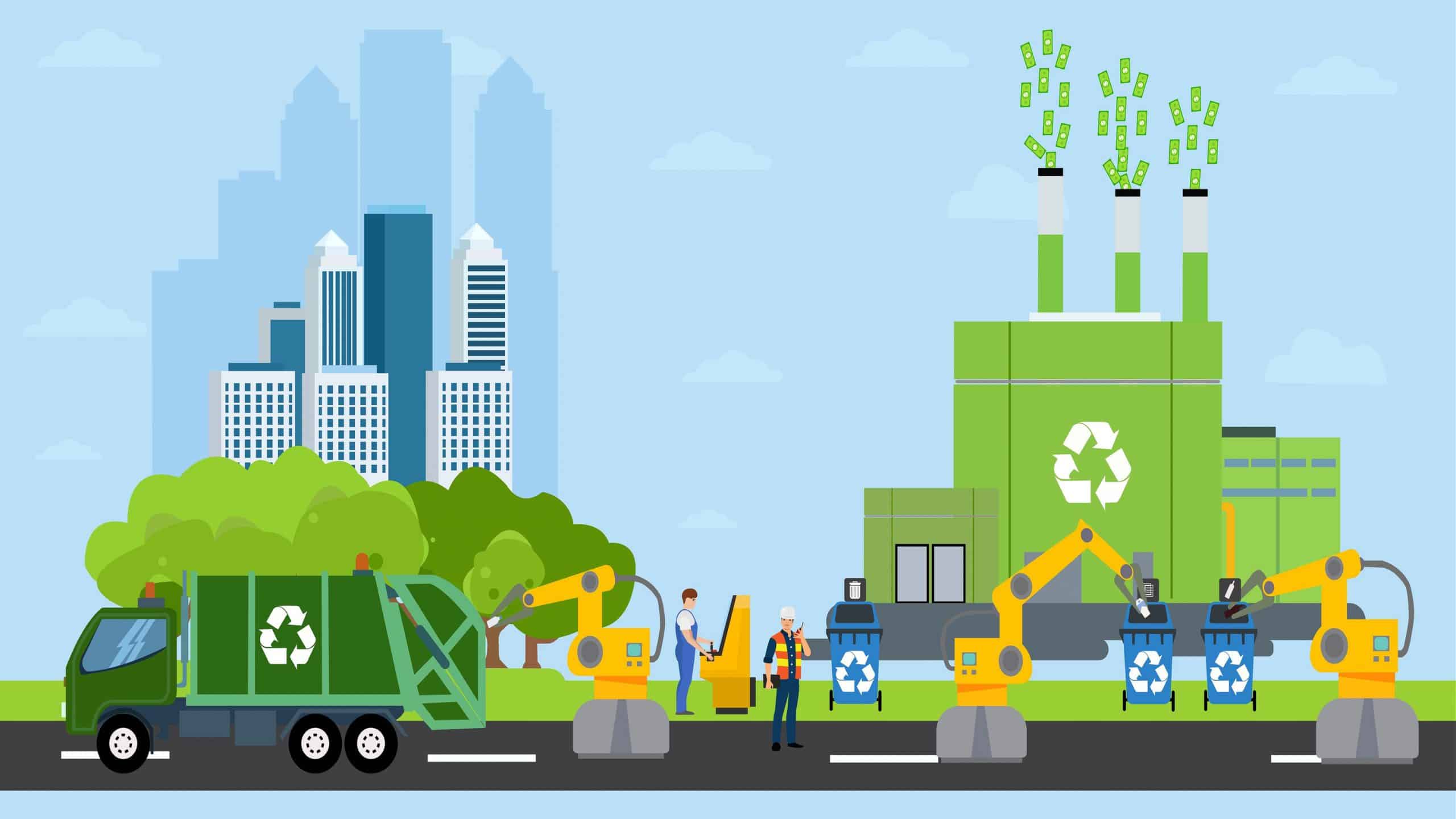The way we handle waste has become a defining challenge of the 21st century. As global populations grow and consumer habits evolve, the volume and complexity of waste generated are overwhelming traditional disposal methods. Landfills are reaching capacity, oceans are filling with plastic, and the linear “take-make-dispose” model is proving to be environmentally and economically unsustainable. In response, a paradigm shift is underway: modern waste management is moving beyond simple disposal to embrace a holistic, integrated approach focused on reduction, reuse, and resource recovery.
This detailed article will explore the core principles and innovative practices that define modern waste management. We will delve into the critical components of the waste hierarchy, cutting-edge technologies, the importance of a circular economy, and the crucial role that individuals, businesses, and governments must play in building a more sustainable future.
The Foundation: The Waste Hierarchy
At the heart of modern waste management is the Waste Hierarchy, a framework that prioritizes actions to generate the most environmental benefit. It represents a fundamental shift from disposal as the primary goal to a multi-tiered approach:
- Reduce: The most effective strategy is to prevent waste from being created in the first place. This includes reducing consumption, choosing products with minimal packaging, and designing products for durability and longevity.
- Reuse: Extending the life of products through reuse, repair, and donation. This is a simple yet powerful way to divert waste from landfills.
- Recycle: Processing waste materials into new products to prevent the consumption of new raw materials. This is a cornerstone of modern systems.
- Recover: Converting non-recyclable waste into energy. This process, often called Waste-to-Energy (WtE), generates electricity or heat, providing a valuable alternative to landfilling.
- Dispose: As a last resort, waste that cannot be reduced, reused, recycled, or recovered is safely disposed of in landfills. Modern landfills are engineered to be safer, with liners and systems to capture methane gas and prevent groundwater contamination, but they remain the least desirable option.
This hierarchy guides policymakers and waste managers in designing comprehensive and effective systems.
Key Practices and Technologies in the Modern Era
Modern waste management is a complex ecosystem of logistics, technology, and community engagement. Here are some of the most impactful practices and innovations:
Smart Waste Collection and Logistics
Traditional waste collection is often inefficient, with trucks following fixed routes regardless of bin fullness. Modern systems are changing this with smart bins equipped with sensors. These sensors monitor fill levels and send data to a central hub, allowing collection routes to be optimized in real-time. This reduces fuel consumption, labor costs, and traffic, making the entire process more efficient and environmentally friendly.
Advanced Recycling Technologies
While traditional recycling is effective for common materials like paper, glass, and plastic bottles, a significant amount of complex plastic waste is still landfilled. New technologies are addressing this challenge:
- Chemical Recycling: This process breaks down plastic polymers into their original components, which can then be used to create new, virgin-quality plastics. This is particularly promising for mixed or contaminated plastics that are difficult to recycle mechanically.
- Robotics and AI: Automated sorting facilities use robotics and artificial intelligence to identify and separate different types of materials with a speed and accuracy that manual sorting cannot match. This improves the quality of recycled materials and allows for the recovery of more valuable resources.
The Rise of Waste-to-Energy (WtE)
Waste-to-Energy facilities, or incinerators with energy recovery, have evolved significantly. Modern WtE plants are a far cry from the polluting incinerators of the past. They are highly efficient, using state-of-the-art filtration systems to capture pollutants and generate a clean source of electricity or heat. While they are a form of disposal, they are ranked higher than landfills on the waste hierarchy because they reduce landfill volume and provide a productive use for non-recyclable waste.
Bioreactors and Methane Capture
Even in modern landfills, the organic waste that ends up there still needs to be managed. Bioreactor landfills accelerate the decomposition of waste, and critically, modern landfills are equipped with systems to capture the methane gas produced during this process. This methane, a potent greenhouse gas, can then be converted into fuel or electricity, turning a environmental liability into a valuable energy source.
The Circular Economy: A Revolutionary Vision
The ultimate goal of modern waste management is to move away from the linear economy to a circular economy.
- Linear Economy: Take → Make → Dispose. This model is based on cheap, easily accessible materials and has led to immense waste generation.
- Circular Economy: Reduce → Reuse → Recycle. In this model, waste is a design flaw. Products are designed to be durable, easily repaired, and, at the end of their life, their components are recycled back into the production cycle.
A circular economy is a systemic shift that requires collaboration across industries:
- Design for Circularity: Manufacturers must design products using recycled content and ensure they can be easily disassembled for recycling.
- Extended Producer Responsibility (EPR): This policy makes producers financially and/or physically responsible for the life cycle of their products, including their disposal. This incentivizes them to create less waste and more recyclable products.
- Innovations in Packaging: Companies are developing sustainable packaging alternatives, such as compostable materials, refillable containers, and “naked” products that require no packaging at all.
This shift transforms waste from a problem into a resource, creating new business models and fostering economic growth that is decoupled from resource depletion.
The Crucial Role of Stakeholders
Achieving effective modern waste management is a shared responsibility that requires the active participation of all sectors of society.
Governments and Policymakers
Governments play a pivotal role by creating the regulatory framework and financial incentives for a sustainable system. This includes:
- Implementing EPR policies to hold producers accountable.
- Enforcing regulations on landfill standards and emissions from WtE facilities.
- Investing in public infrastructure for recycling and waste-to-energy.
- Launching public awareness campaigns to educate citizens on proper waste separation and the importance of recycling.
- Imposing taxes or bans on single-use plastics and other problematic waste items.
Businesses and Industry
The private sector is at the forefront of this transformation. Businesses must:
- Embrace circular economy principles in their product design and supply chains.
- Invest in research and development for new, sustainable materials and technologies.
- Adopt more efficient, resource-saving production methods.
- Take responsibility for their products through take-back schemes and recycling programs.
Individuals and Communities
Every individual has a part to play in this system. This includes:
- Separating waste correctly at home (e.g., paper, plastic, glass, organic waste).
- Reducing consumption and being a conscious consumer.
- Reusing and repairing items instead of immediately discarding them.
- Supporting businesses that prioritize sustainability and use recycled materials.
- Advocating for better waste management infrastructure in their local communities.
Conclusion: A Path to a Zero-Waste Future
Modern waste management is no longer a matter of simply burying our problems. It is a sophisticated, technology-driven, and integrated approach that treats waste as a valuable resource. By moving beyond the linear model and embracing the principles of the waste hierarchy and the circular economy, we can transform a major environmental challenge into an opportunity for innovation, economic growth, and a more sustainable planet.
The journey to a zero-waste future is ongoing and requires a collective commitment. With smart policies, innovative technologies, and the conscious actions of every individual, we can create a system that is not only more efficient but fundamentally more responsible. The future of our planet depends on our ability to manage our waste, and modern practices provide a clear, actionable roadmap to get us there.





